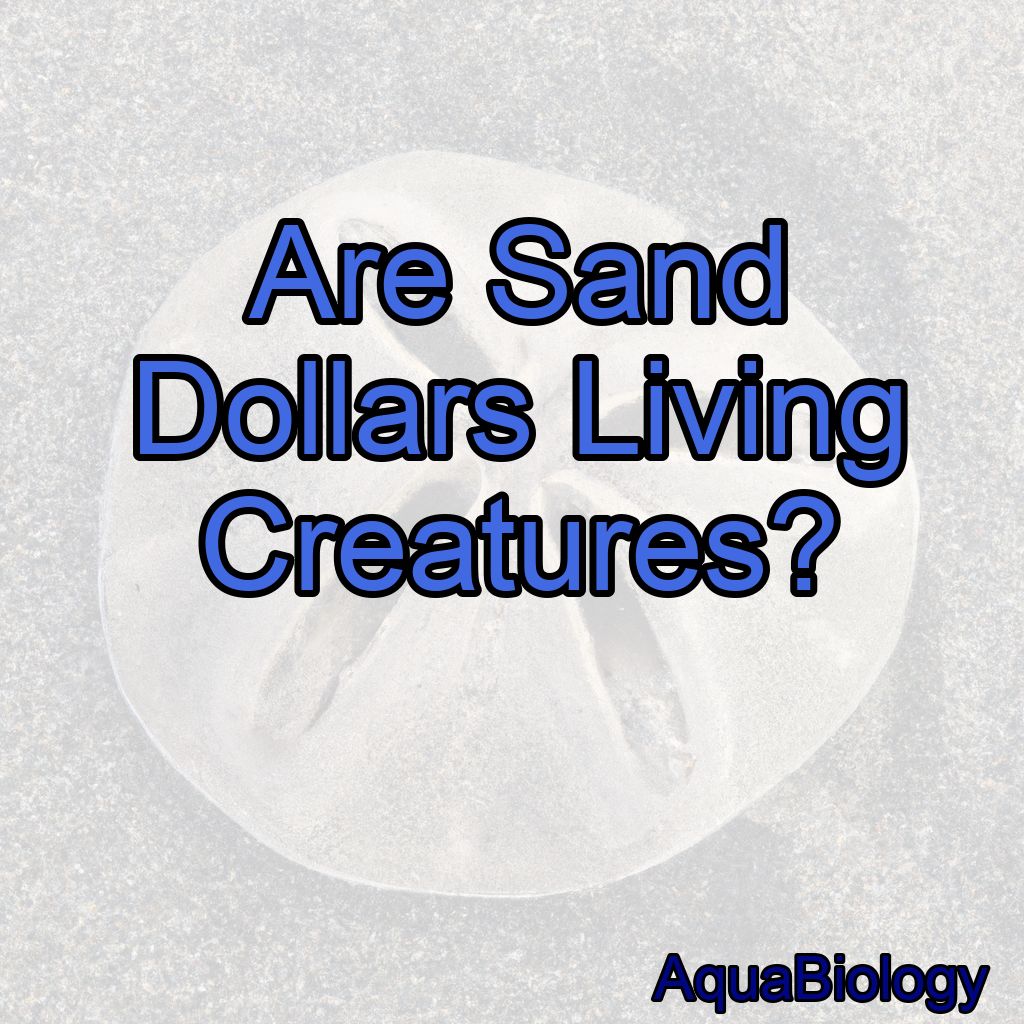As a marine biologist, I have always been fascinated by sand dollars.
Yes, sand dollars are living creatures.
These flat, round-shaped creatures are often found washed up on beaches and have been a subject of curiosity for many people.
In this blog post, I will answer the question, “are sand dollars living creatures?”
What are Sand Dollars?
Sand dollars are echinoderms, which means they are related to sea stars, sea urchins, and sea cucumbers. They have a flat, round-shaped body and are covered in tiny spines.
Sand dollars are found in sandy or muddy bottoms in shallow waters along the coast. They feed on small particles of food that they sift from the sand.
The Anatomy of Sand Dollars
Sand dollars have a unique anatomy that sets them apart from other echinoderms. They have a rigid, flattened skeleton called a test, which is covered in small, hair-like projections called cilia.
These cilia help the sand dollar to move along the sand and to capture food particles.
Sand dollars also have a complex respiratory system that allows them to extract oxygen from the surrounding water.
They have a series of tiny tubes called petaloids that extend from their body and help them to breathe.
Reproduction in Sand Dollars
Sand dollars reproduce sexually, with males releasing sperm into the water that is then taken up by females.
After fertilization, the female sand dollar will lay hundreds of eggs that will develop into larvae.
The larvae will eventually settle on the ocean floor and begin to develop into adult sand dollars.

Are Sand Dollars Living Creatures?
Yes, sand dollars are living creatures. They are not shells or rocks, but rather sea creatures that are alive and part of the marine ecosystem.
While they may appear lifeless when found washed up on a beach, they are actually alive and should be returned to the ocean.
How to Identify a Living Sand Dollar
To identify a living sand dollar, look for small, hair-like projections on their body. These are the cilia that help them move along the sand.
You may also see small, spiky structures on their body, which are the petaloids that help them breathe.
The Importance of Sand Dollars in the Ocean Ecosystem
Sand dollars play an important role in the ocean ecosystem.
They help to maintain healthy levels of sand and sediment on the ocean floor, which is important for the survival of other marine animals.
They also provide a food source for predators such as sea stars and crabs.
Conclusion: Are Sand Dollars Living Creatures?
In conclusion, sand dollars are living creatures that are part of the marine ecosystem.
They have a unique anatomy, including a flat, round-shaped body, rigid skeleton, and complex respiratory system.
Sand dollars reproduce sexually and play an important role in the ocean ecosystem.
To identify a living sand dollar, look for small, hair-like projections on their body and spiky petaloids.
Remember, if you find a sand dollar washed up on the beach, it is alive and should be returned to the ocean.
- facts:
1. Sand dollars are echinoderms, related to sea stars, sea urchins, and sea cucumbers.
2. They have a flat, round-shaped body and are covered in tiny spines.
3. Sand dollars reproduce sexually and lay hundreds of eggs that develop into larvae.
4. They play an important role in the ocean ecosystem by helping to maintain healthy levels of sand and sediment on the ocean floor.
5. If you find a sand dollar washed up on the beach, it is alive and should be returned to the ocean.
FAQs
Is it OK to take sand dollars off the beach? No, it is not OK to take sand dollars off the beach as they are living organisms and play an important role in the ecosystem.
It is also illegal in many places to remove them from their natural habitat.
Why can’t you take sand dollars from the beach? Taking sand dollars from the beach is illegal in many places because they are living creatures and play an important role in the ecosystem.
Removing them from their natural habitat can disrupt the balance of the ecosystem and harm other marine life. Additionally, sand dollars are often protected by local and federal laws to preserve their populations and prevent over-harvesting.
Should you touch sand dollars?
No, you should not touch sand dollars as they are living creatures and handling them can harm or kill them.
Is sand dollar a living thing?
Yes, sand dollars are living organisms.
They are a type of echinoderm, related to sea stars and sea urchins, and are able to move and feed.
Is it safe to pick up sand dollars?
It is generally safe to pick up sand dollars as long as they are already dead and not still alive.
Why is it illegal to take sand dollars from the beach? It is illegal to take sand dollars from the beach because they are living organisms that play an important role in the ecosystem, and removing them can disrupt the balance of the ecosystem.
Additionally, many species of sand dollars are protected by law to prevent over-harvesting and depletion of their populations.




